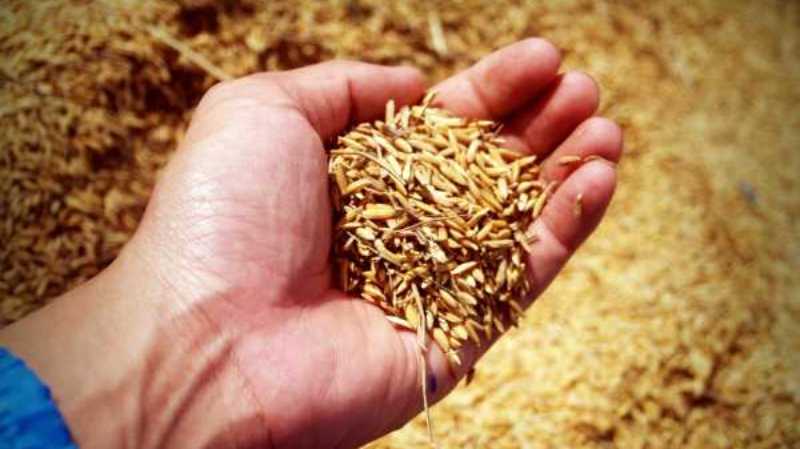Grain Index
Table of Contents
Chapter 2 explained the use of food-grains as the store of value in a supereconomy.
Chapter 3 explained that these food-grains are the basis for points valuation. This is opposed to the current economic system which is based on fiat money.

Supereconomics uses grains as the store or measure of value because grains are:
- Common
Everyone eats and is familiar with the value of food. Grains are the most common food in the world.
- Asia uses rice
- Europe uses wheat
- The Americas use corn
- Granular
Grains are made up of single bits that are very small. This allows a precise valuation that can be increased or decreased in small increments.
At distant times, equal amounts of labour will be bought with equal amounts of wheat than with any other commodity.
At distant times, equal amounts of wheat will enable its possessor to buy the same amount of the labour of other people. Although equal amounts of wheat will not do it exactly.
Adam Smith
Some countries, like Greenland, do not produce their own grains. This is where the Grain Index comes in.
It is also used for reconciling the different grain-values from different continents.
The Grain Index is the table of ratios of goods and services to grains. This is similar to a Big Mac Index which bases value on the market price of a Big Mac.
Assume that 3 countries each have a main grain and have different local prices for grains in USD:
| Country | Rice/kg | Wheat/kg | Corn/kg |
|---|---|---|---|
| A rice | $1 | $2 | $3 |
| B wheat | $2 | $1 | $3 |
| C corn | $3 | $2 | $1 |
Each country will use their main grain as the basis for 1 point.
If Country A sells a thing locally worth 100 points real price to Country C, will Country C assign to it a market price of $100 or $300?
According to convention, 1 point represents the real value of 1 kilogram of the cheapest basic grain in a country.
However, 1 kilogram of a low value crop light cassava might be of less real value compared to 1 kilogram of rice.
| Crop | Calories |
|---|---|
| Rice | 1 |
| Corn | 0.9 |
| Wheat | 0.8 |
| Cassava | 0.4 |
Therefore:
- the value of 1 point of cassava would be around 0.4 points of rice
- the value of 1 point of corn would be around 0.9 points of rice
This can be made more accurate by defining the type of grains and getting the actual calorie content.
The important difference here with the fiat-based valuation is that differences in the values are allowed.
- For example, a common breed of sweet corn might be 0.7-0.9 calories compared to 1 calorie of rice. But they will never be as low as 0.3-0.4 as cassava.
- Instead of precise cents or decimal values, Supereconomics relies on viable ranges that are common and understandable to all.
This slight imprecision allows freedom and flexibility, very different from the rigidity of the current Economic system.
Basis for Zero Market Price Inflation
The goal of Supereconomics is to match demand with supply in real time. A perfect match represents the match of real with nominal values.
This means that there is zero or minimum demand or supply inefficiency compared to the previous time period.
This manifest as zero Market price inflation in the perspective of modern Economics.
The grain index is the basis for judging Market price inflation. For example, the price of chicken and rice in 2 countries were different in 2019:
| Q4 2019 | Philippines | Vietnam |
|---|---|---|
| 1 kg Rice can buy | 330 grams chicken | 100 grams chicken |
| 1 kg Chicken can buy | 3.33 kg Rice | 10 kg Rice |
This means that:
- chicken is really cheaper in the Philippines
- rice is really cheaper in Vietnam
If rice is a basic need and chicken is a luxury, then Filipinos enjoy luxuries better but Vietnamese enjoy basics better.
This is consistent if we replace chickens with cars. A Toyota Vios is 16,000 kg rice in the Philippines, but 44,250 kg rice in Vietnam.
| As of Q4 2019 | Singapore | Philippines | Vietnam |
|---|---|---|---|
| GDP per capita | $100,345 (1st place, 13x Vietnam) | $8,936 (2nd place, 1.19x Vietnam) | $7,510 (3rd place) |
| Rice Prices per kg | 75 US cents or 1.1 SGD (2nd place or 1.5x Vietnam) | 80 US cents or 40 PHP (3rd or 1.6x Vietnam) | 50 US cents or 12k VND (1st place or cheapest) |
| Chicken Prices in rice | 4.22 kg rice (2nd place or 1.3x Philippines) | 3.25 kg rice (1st place) | 8.33 kg rice (3rd place or 2.56x Philippines) |
| Toyota Vios in rice | 73,636 kg rice (3rd place or 4.46x Philippines) | 16,500 kg rice (1st place) | 44,250 kg rice (2nd place or 2.68x Philippines) |
| Toyota Alphard Luxury Van in rice | 206,000 kg rice (2nd place or 2.25x Philippines) | 91,250 kg rice (1st place) | 336,000 kg rice (3rd place or 3.7x Philippines) |
The grain index thus explains:
- the different socioeconomic condition of each society. This is the grain index compared with others
- the increase or decrease of the demand and supply efficiencies through time. This is the grain index compared with itself through time or with instances of itself
Exposing Problems with the Economies
The grain index is the basis of Net Domestic Product which is the Supereconomic alternative to Gross Domestic Product (GDP) of Economics.
The NDP includes the different budgets and spending patterns of various governments, based on Law 3. This lets people know which social cycle their soceity is in.